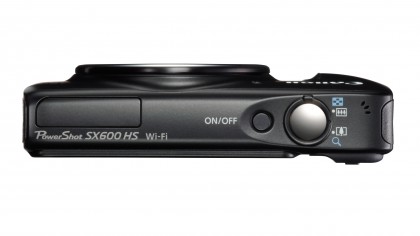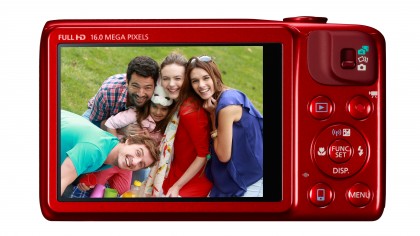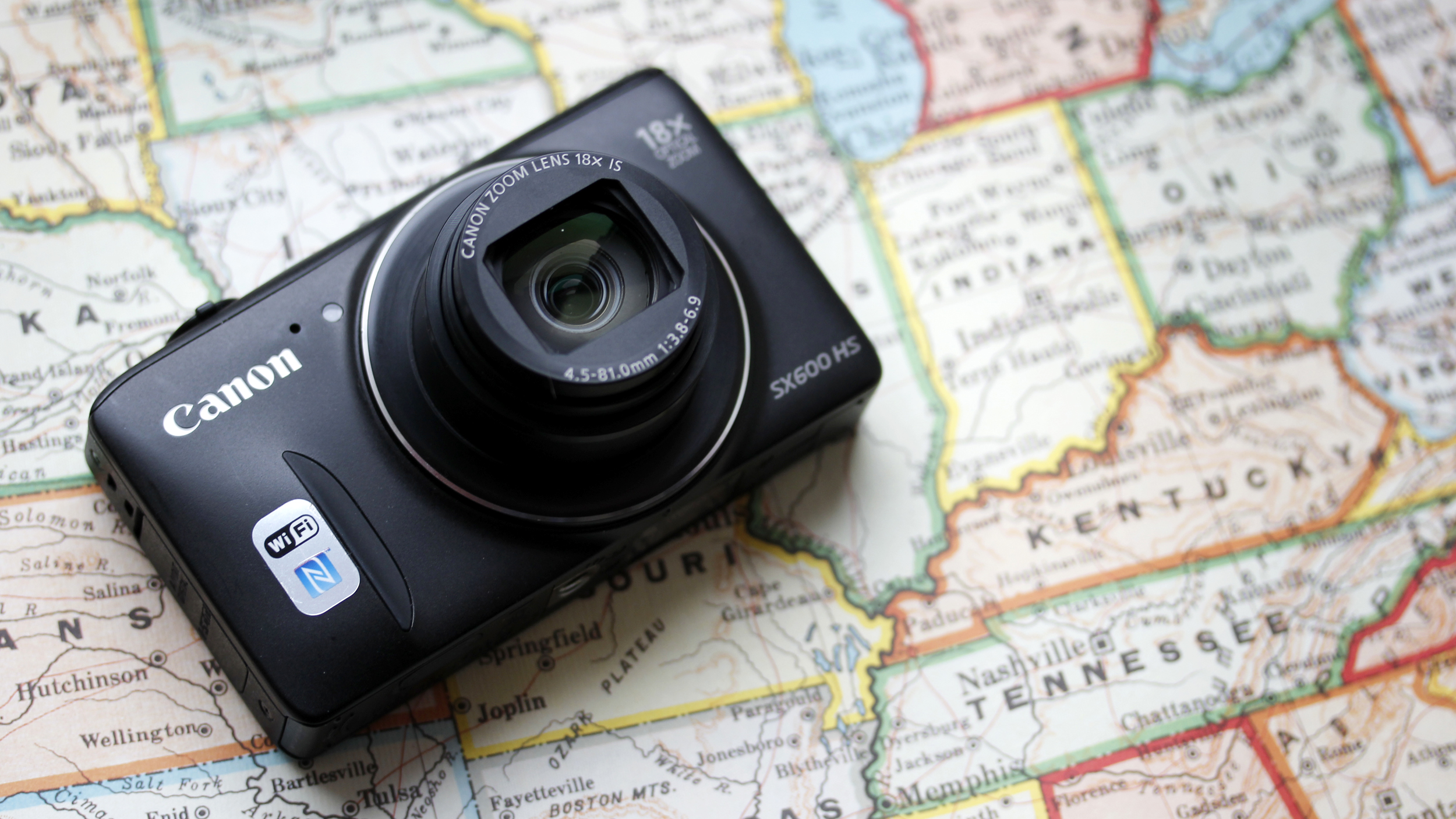Why you can trust TechRadar
The SX600HS is very slim, especially considering the 18x optical zoom that the body is concealing. The camera should easily slip into a jacket pocket or bag without too much of a problem.
There's not a huge number of buttons on the camera, which for something that's almost entirely automatic, isn't particularly surprising. On the top of the camera is the on/off switch, along with the shutter button, around which there's a zoom ring for extending and retracting the lens.

A slightly pronounced grip on the front of the camera works well with a thumb rest on the back of the camera to make it feel secure in the hand, especially when you're using the camera one-handed. Built into the thumb rest is a switch for toggling between Hybrid Auto, Creative Shot and standard shooting modes.
Other buttons on the back of the camera include a traditional four way navigational pad. Each of the directional keys has a specific function assigned to it. The left button can be used to activate macro (close) focusing, the up key is for accessing exposure compensation (only accessible in Program Auto mode), the right key is for changing the flash settings, and finally the down key is used for altering the display.
All of the buttons are grouped on the right hand side of the body of the camera, which is also useful when shooting one-handed as they are easily reachable by the thumb.
In the centre of the pad is a function button that can be used for quickly accessing the most commonly used settings. This function menu changes depending on the mode you're shooting in. In Hybrid Auto, your options are limited to simply turning on the timer, or changing the movie quality. However, in standard shooting mode, you'll find a lot more options, including filter options, scene modes and the ability to set to Program Auto.
If you choose to shoot in Program Auto, even more options will be available on the function menu, including white balance, metering and sensitivity. Unfortunately there's no way to change the shutter speed or aperture.
Using Hybrid Auto mode gives you zero control over the shooting parameters, with the camera choosing everything for you. The camera will start shooting a short video as soon as the shutter is half pressed, and then combine all of those videos together at the end of the day, in-camera, as a snapshot of the day that has just happened. It's a shame that you can't activate this mode while shooting in other modes, since it's a fun addition if you're photographing a holiday or a family event such as a party or wedding.
Shooting in Creative Mode is also frustratingly limited. By activating this mode, when you take a shot, the camera will automatically apply a number of different filters to each image. You can choose different sets, such as 'Retro' and 'Special' or just leave it on automatic. Although it's nice to have different options to choose from, it would have been nice to just be able to use one filter at a time too.

There are some separate filters that you can choose when using the standard shooting mode – these are accessed via the function menu.
By default, the camera's autofocusing mode is set to Face AiAF, which gives priority to faces, but can make focusing and recomposing on other subjects tricky. Instead, I'd recommend changing to Center Point AF. You can't change the AF point to somewhere else in the scene, which is a shame, but not wholly unexpected from a camera of this level.
The SX600 HS has built-in Wi-Fi and NFC technology. Setting up the connection between the camera and phone via Wi-Fi is quick and easy. There's a dedicated button on the back of the camera to start up the Wi-Fi functionality.
We tested this camera in conjunction with an iPhone 4S, to which it connected very quickly despite its lack of an NFC chip – you don't need to enter a password, so the connection is speedy. Once you've connected to the camera, you'll then need to start the Canon Camera Window app on the phone (an Android version is also available).
When playing back images on the camera, you can also use the dedicated button to quickly start up Wi-Fi to share the image with your phone. You can also browse all of the images on the camera to choose the one(s) you want to transfer across. Unlike some other Canon compacts, such as the PowerShot S120, you can't upload images directly to Facebook or other social networking sites straight from the camera, which is a shame.
On the upside however, you can use the Canon Camera Window app to control the camera remotely. You won't get any controls over shooting parameters, but you can zoom in and out from the app and take a picture, which will be saved both to the camera's memory card and your phone.
Amy has been writing about cameras, photography and associated tech since 2009. Amy was once part of the photography testing team for Future Publishing working across TechRadar, Digital Camera, PhotoPlus, N Photo and Photography Week. For her photography, she has won awards and has been exhibited. She often partakes in unusual projects - including one intense year where she used a different camera every single day. Amy is currently the Features Editor at Amateur Photographer magazine, and in her increasingly little spare time works across a number of high-profile publications including Wired, Stuff, Digital Camera World, Expert Reviews, and just a little off-tangent, PetsRadar.

